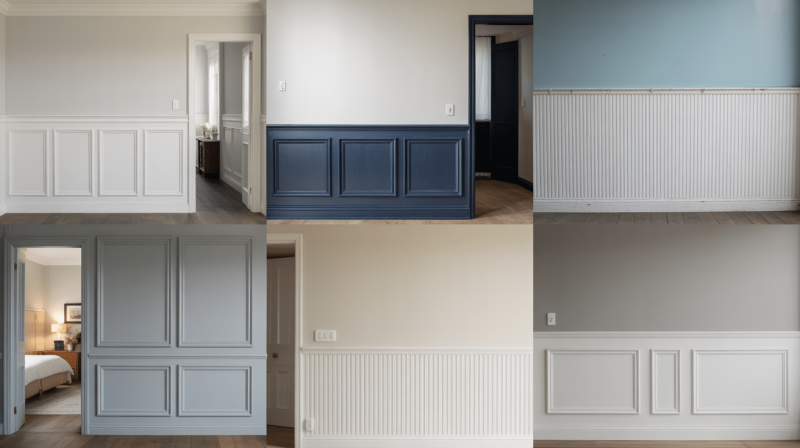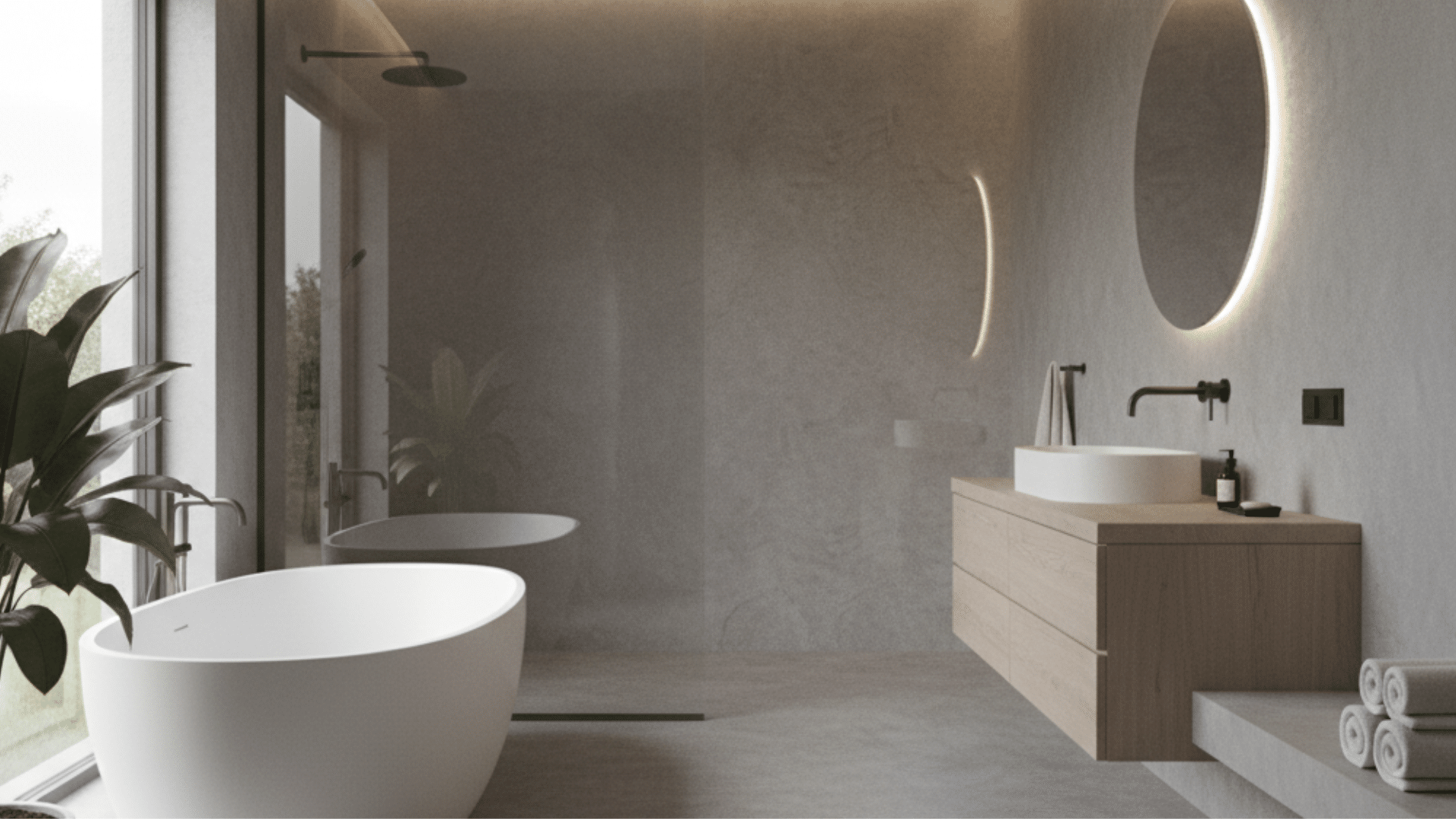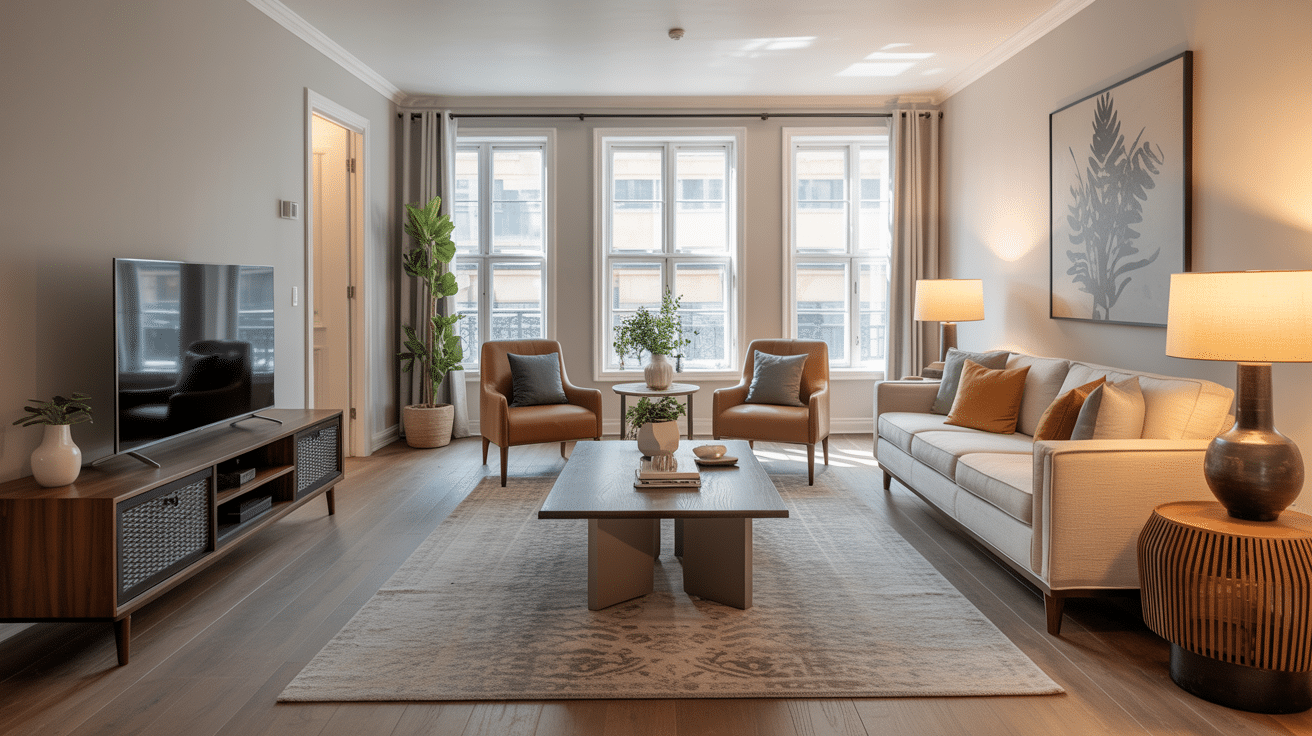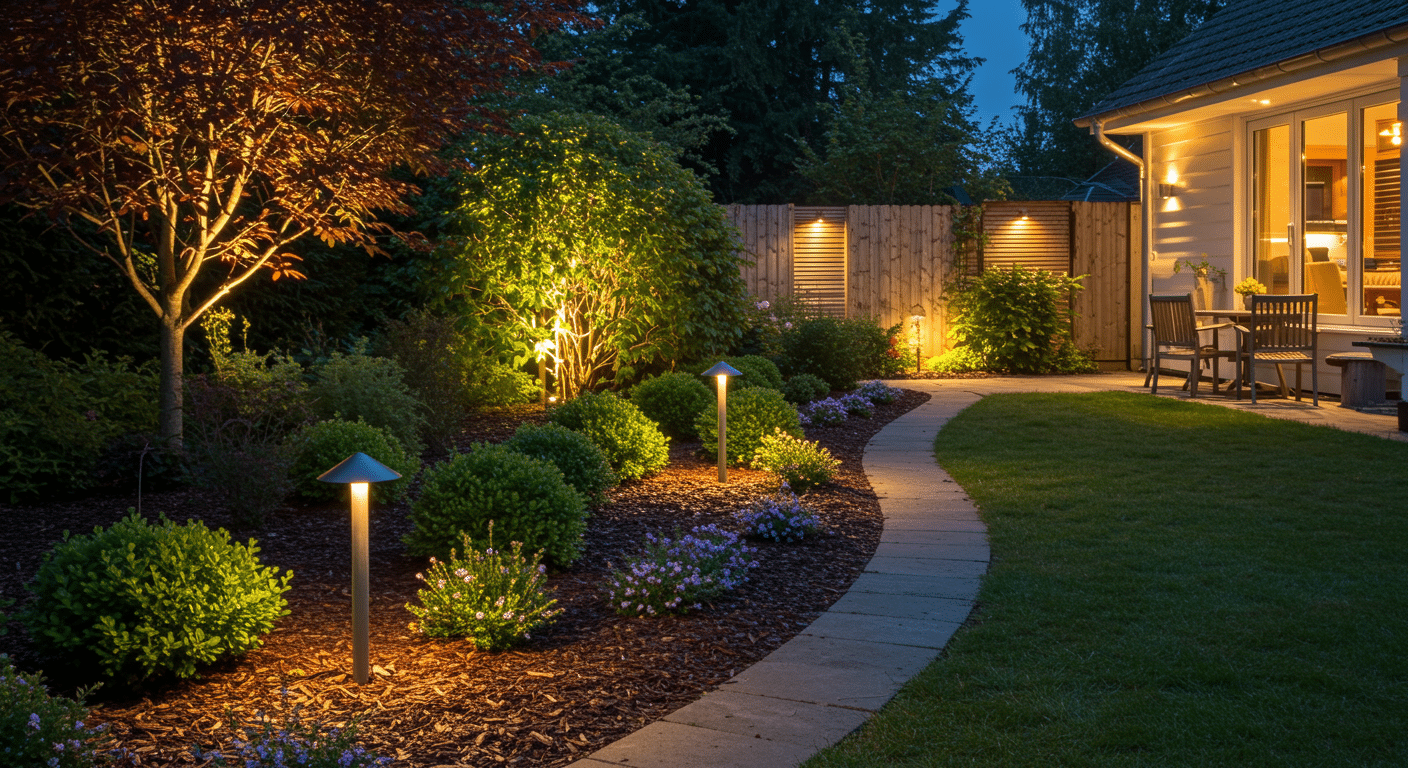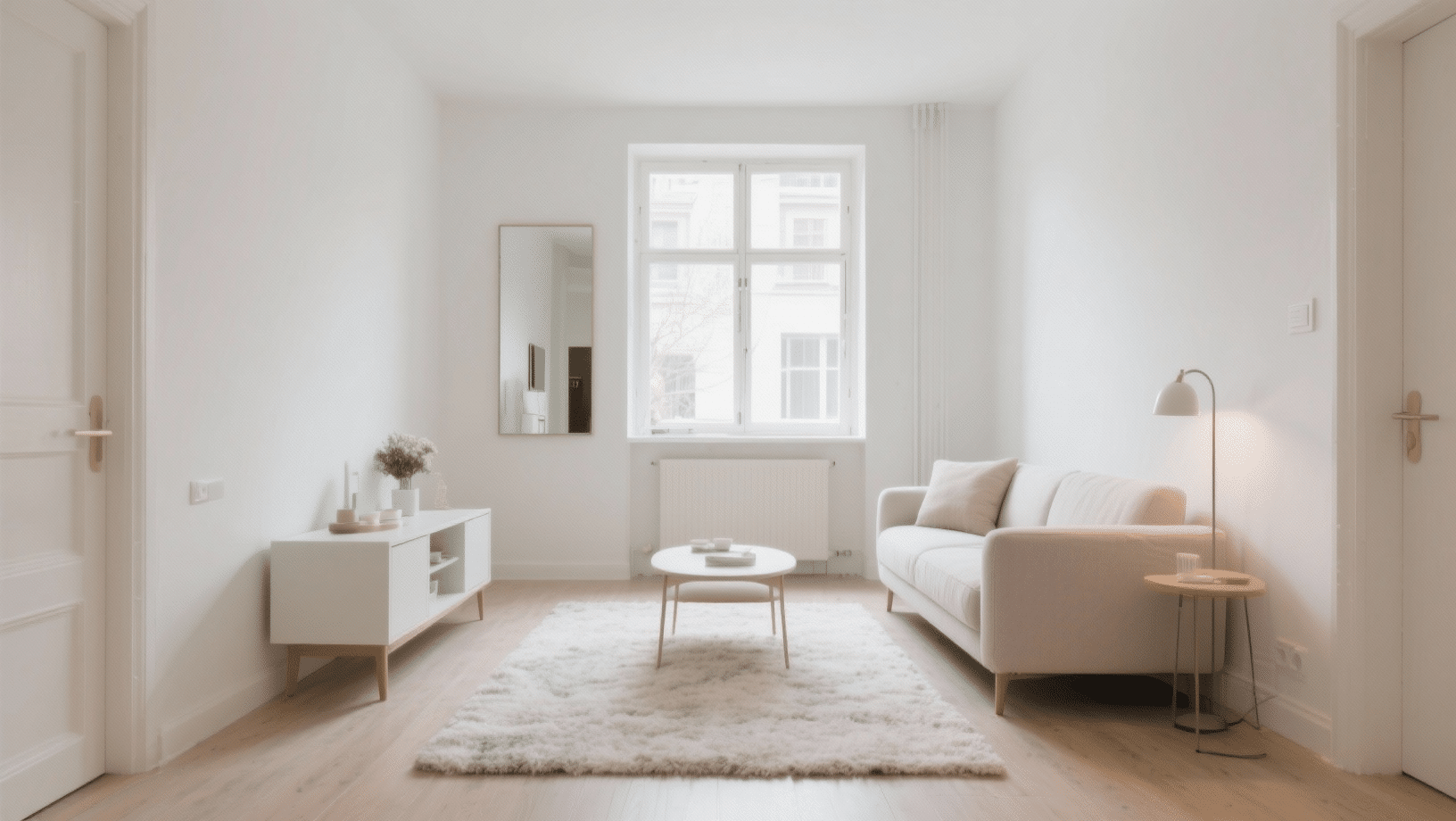I’ve always been impressed by how wainscoting can completely change a space. It’s one of those design elements that feels both classic and fresh at the same time.
If you’re dealing with a boring hallway or want to add some character to your dining room, the right wainscoting style can work magic.
But the thing is, there are so many different types of wainscoting out there, and each one brings its own personality to a room.
From traditional raised panels to modern board and batten, I’ll walk you through the options that’ll make your walls sing. Let’s get in!
What is Wainscoting and Its Origin
Wainscoting is a decorative and functional treatment applied to the lower portion of interior walls.
Traditionally, it involved wooden panels installed along the bottom third of the wall to protect it from scuffs, moisture, and wear, especially in high-traffic areas like hallways and dining rooms.
The term itself comes from the Middle Dutch word “wagenschot,” which originally referred to oak wood used for paneling. European craftsmen in the 14th century started using it in their finest homes, and it eventually made its way across the pond to become a staple in American architecture.
These days, we’re not so worried about keeping our walls safe from horse-drawn cart damage or medieval dampness. Instead, I love how wainscoting adds instant visual depth and texture to any space.
It creates natural break lines that make rooms feel more proportioned and polished, plus it gives you endless opportunities to play with paint colors and finishes.
Different Types of Wainscoting Panels
Wainscoting panels come in a variety of styles; each with its own aesthetic, construction approach, and best-use scenario.
If you’re renovating a cozy cottage or designing a sleek modern space, there’s a panel type to match your vision.
Raised Panel Wainscoting
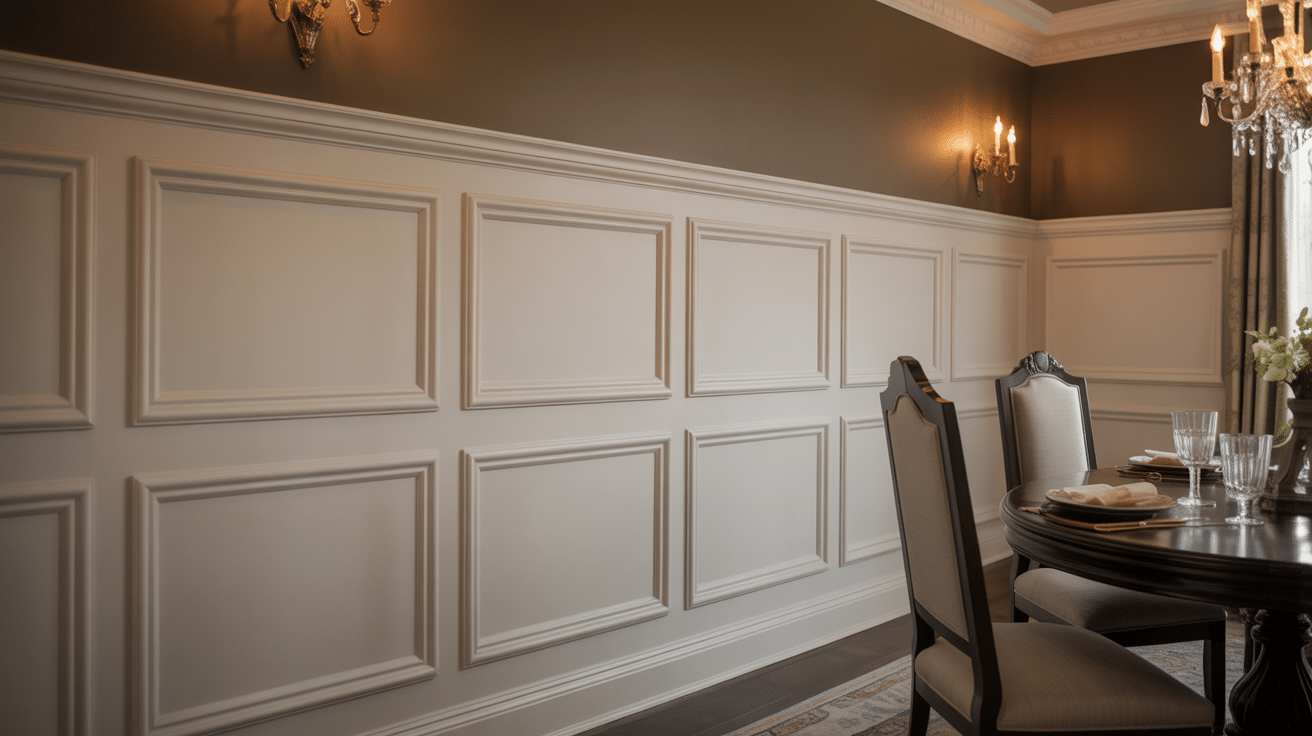
Raised panel wainscoting is the most traditional and formal style, featuring a center panel that is raised above the surrounding frame with beveled or contoured edges.
This style dates back to the 17th and 18th centuries and was a hallmark of Georgian and Colonial interiors.
- Best For: Formal dining rooms, studies, traditional interiors
- Design Impact: Instantly lends a sense of classic style
- Style Pairing: Colonial, Georgian, Victorian
Flat Panel Wainscoting (Shaker Style)
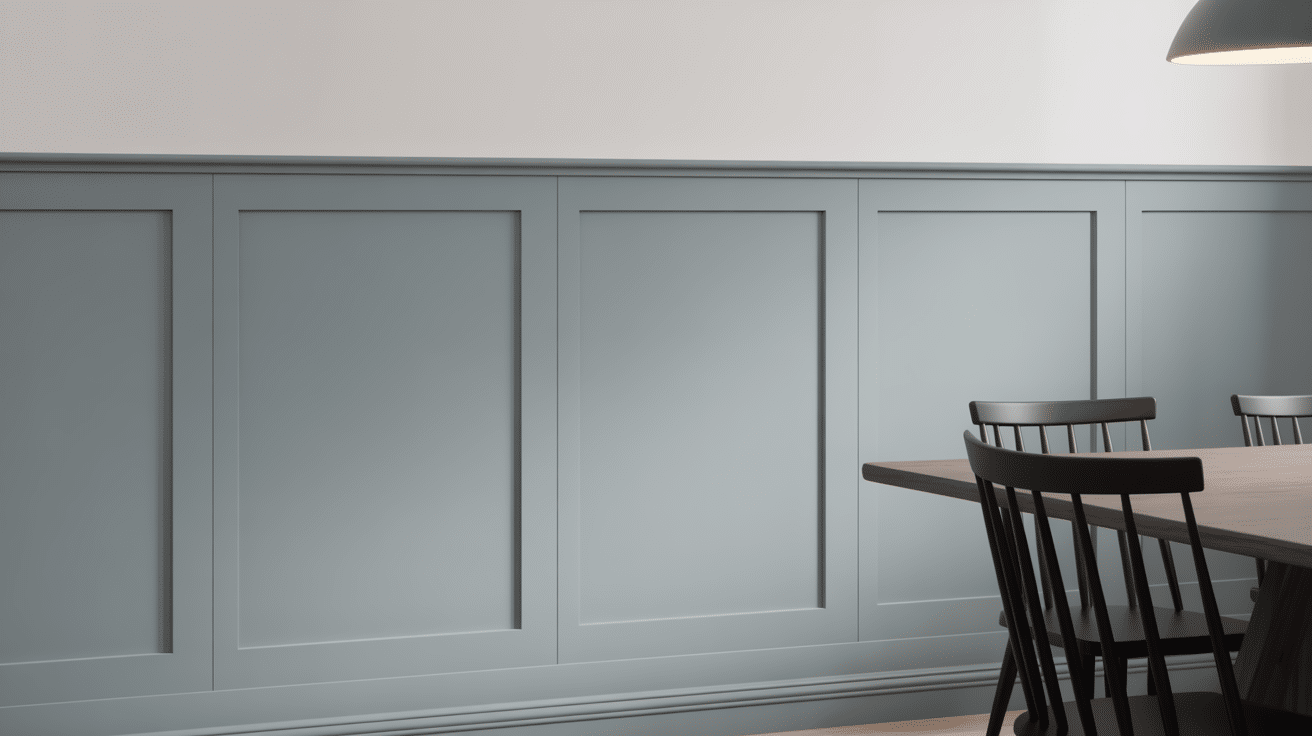
Flat panel wainscoting, often associated with shaker style, is characterized by clean, unadorned rectangular panels recessed into a smooth frame.
This style allows walls to breathe while still offering architectural refinement.
- Best For: Living rooms, hallways, modern bedrooms
- Design Impact: Subtle sophistication with a contemporary twist
- Style Pairing: Scandinavian, Transitional, Minimalist
Beadboard Wainscoting
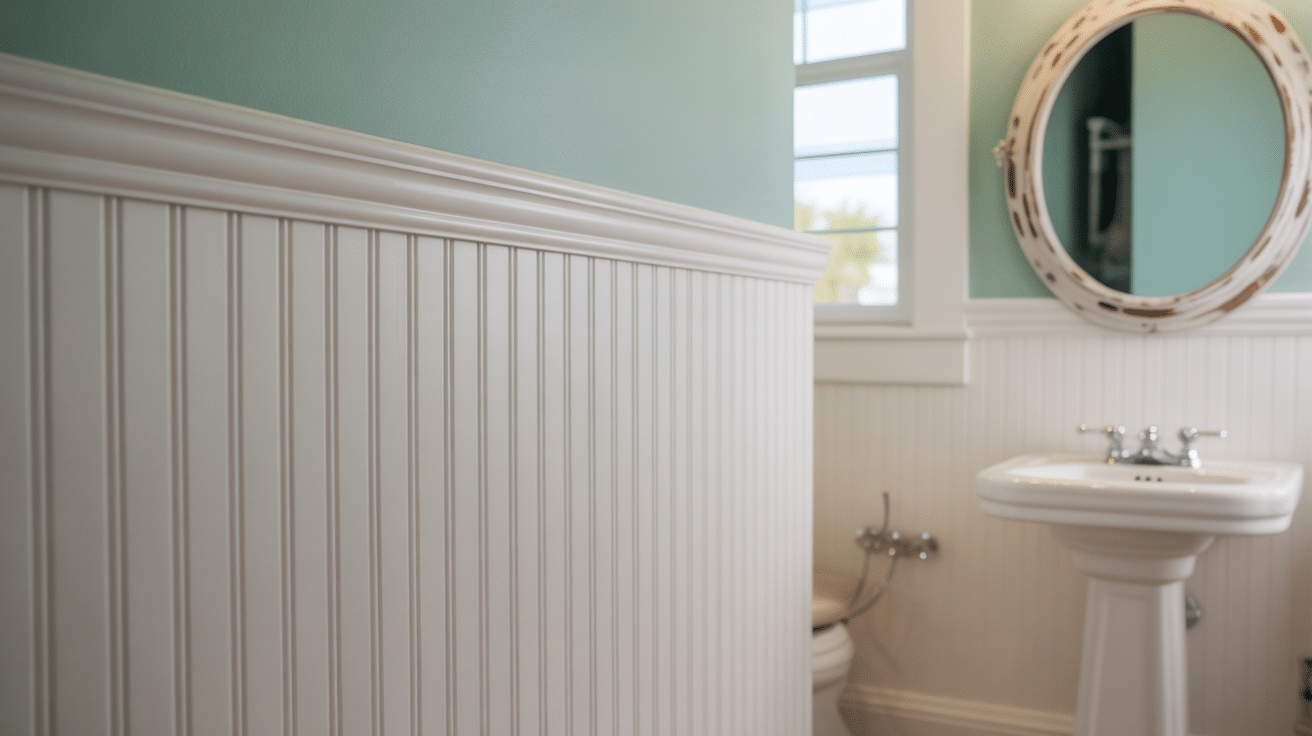
Traditionally crafted from individual tongue-and-groove boards, it’s now commonly available in pre-fabricated panels.
Beadboard brings a cozy, handcrafted feel to interiors and is especially popular in cottage-style and coastal homes.
- Best For: Bathrooms, kitchens, cottage-style spaces
- Design Impact: Cozy and casual with a touch of nostalgia
- Style Pairing: Coastal, Cottagecore, Farmhouse
Board and Batten Wainscoting
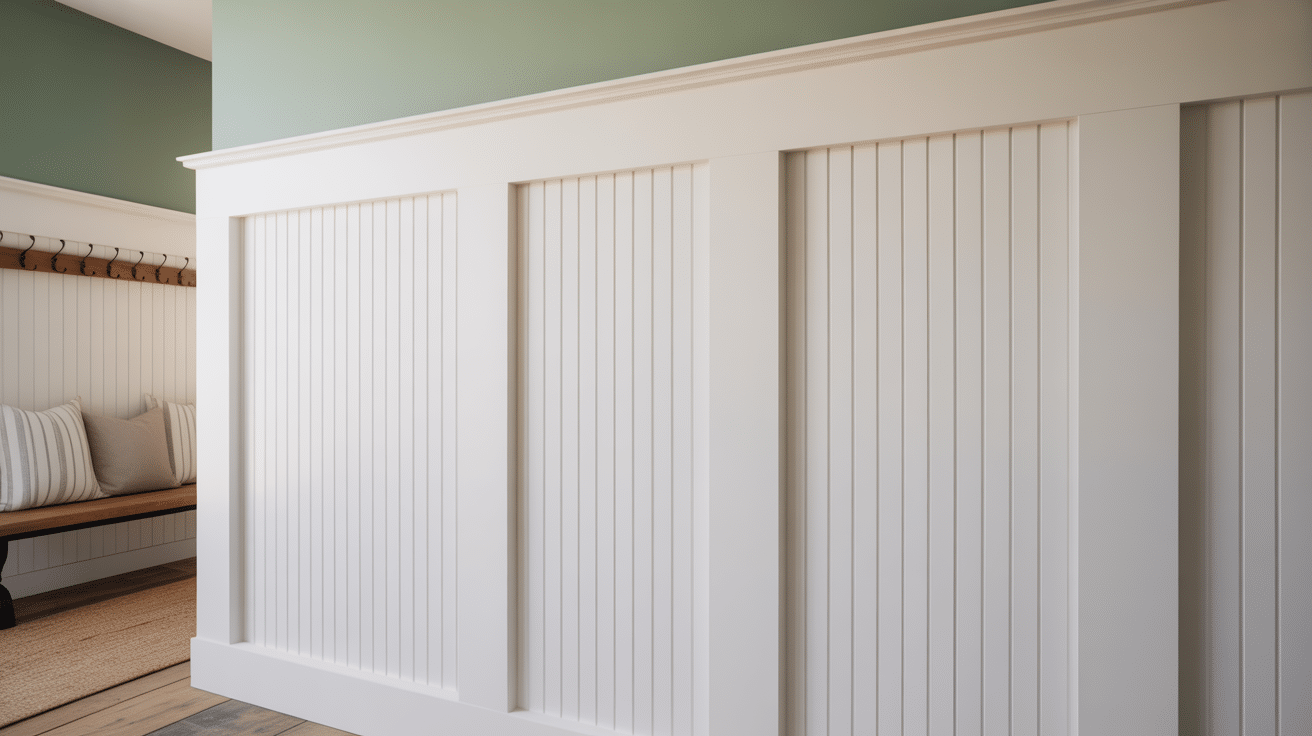
Board and batten wainscoting features wide vertical boards (or the wall itself) with narrow wooden strips called battens, placed over the seams at regular intervals.
The result is a bold, grid-like appearance that adds structure and rhythm to a space.
- Best For: Entryways, staircases, feature walls
- Design Impact: High drama and structural appeal
- Style Pairing: Craftsman, Modern Farmhouse, Rustic
Overlay Wainscoting
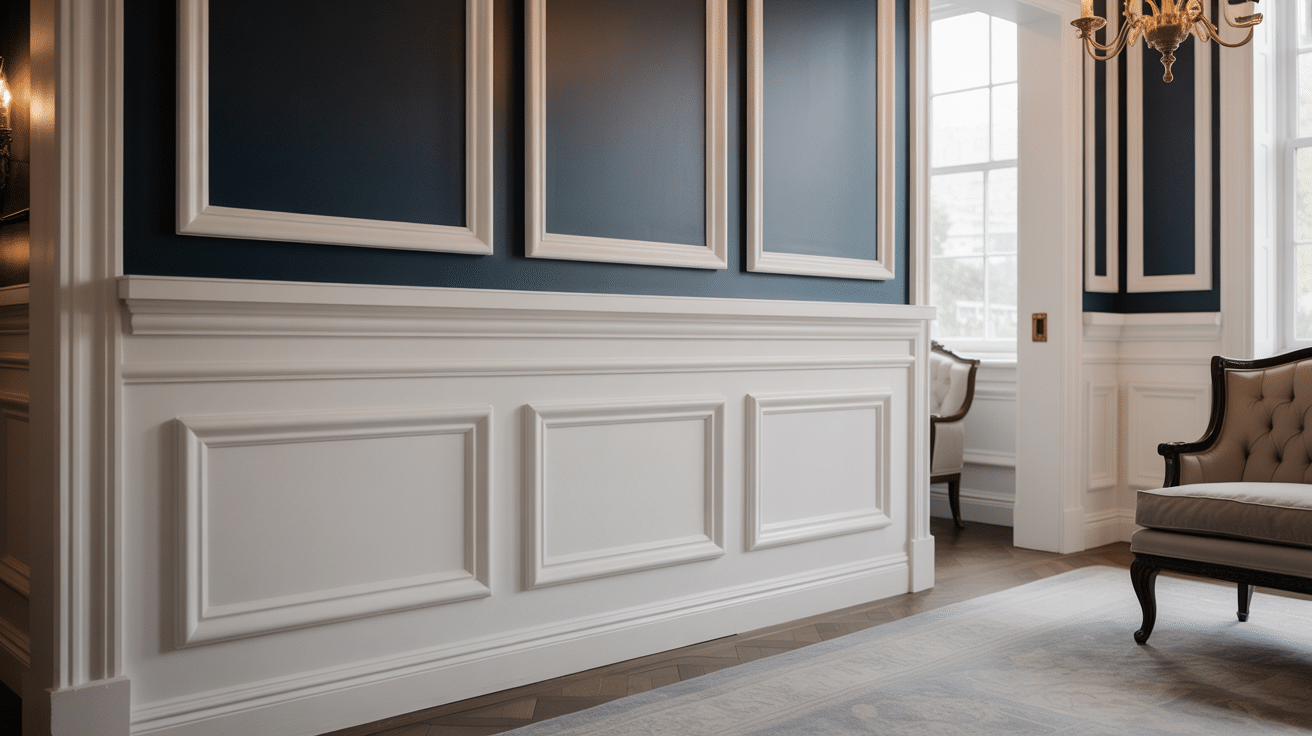
Overlay wainscoting combines elements of both raised and flat panel designs by layering decorative molding over a flat surface to create a rich, dimensional effect.
This style offers a luxurious, custom-built appearance and is often used to replicate high-end millwork without the complexity of full-panel construction.
- Best For: Upscale living areas, luxe bedrooms, home libraries
- Design Impact: Elegant, tailored, and custom-feel
- Style Pairing: Neo-traditional, Luxe Classic, Transitional
Vinyl Panel Wainscoting
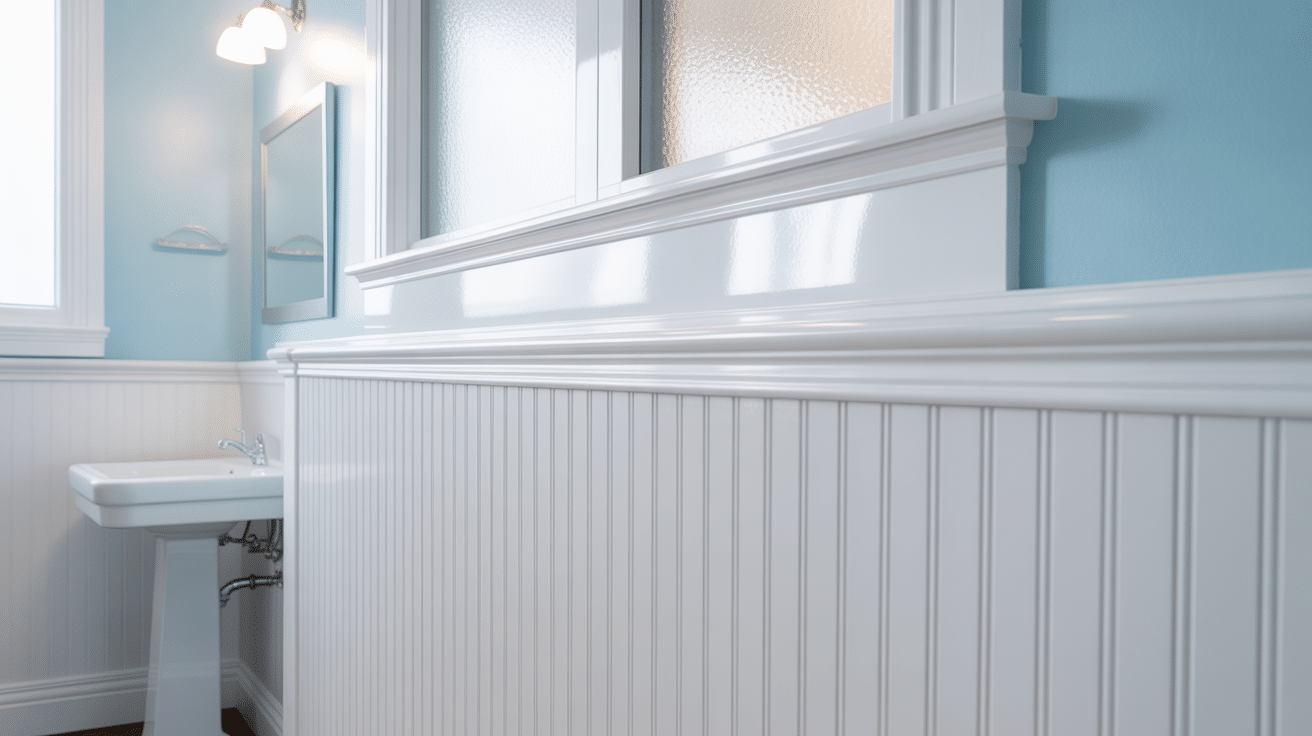
Vinyl panel wainscoting is a practical, moisture-resistant alternative to traditional wood or MDF panels.
Made from durable PVC or synthetic materials, it mimics the look of beadboard or flat panel styles while offering superior resistance to water, mold, and stains.
It’s often pre-finished, making installation quick and cleanup easy.
- Best For: Bathrooms, basements, laundry rooms, or high-humidity areas
- Design Impact: Adds a clean, classic look while offering low-maintenance durability
- Style Pairing: Coastal, Utility-Chic, Modern Farmhouse
Styles of Wainscoting For Interior Design
Find out how different wainscoting styles can change the mood and character of your space. From classic style to modern minimalism, each style brings its own unique design narrative.
1. Classic Colonial
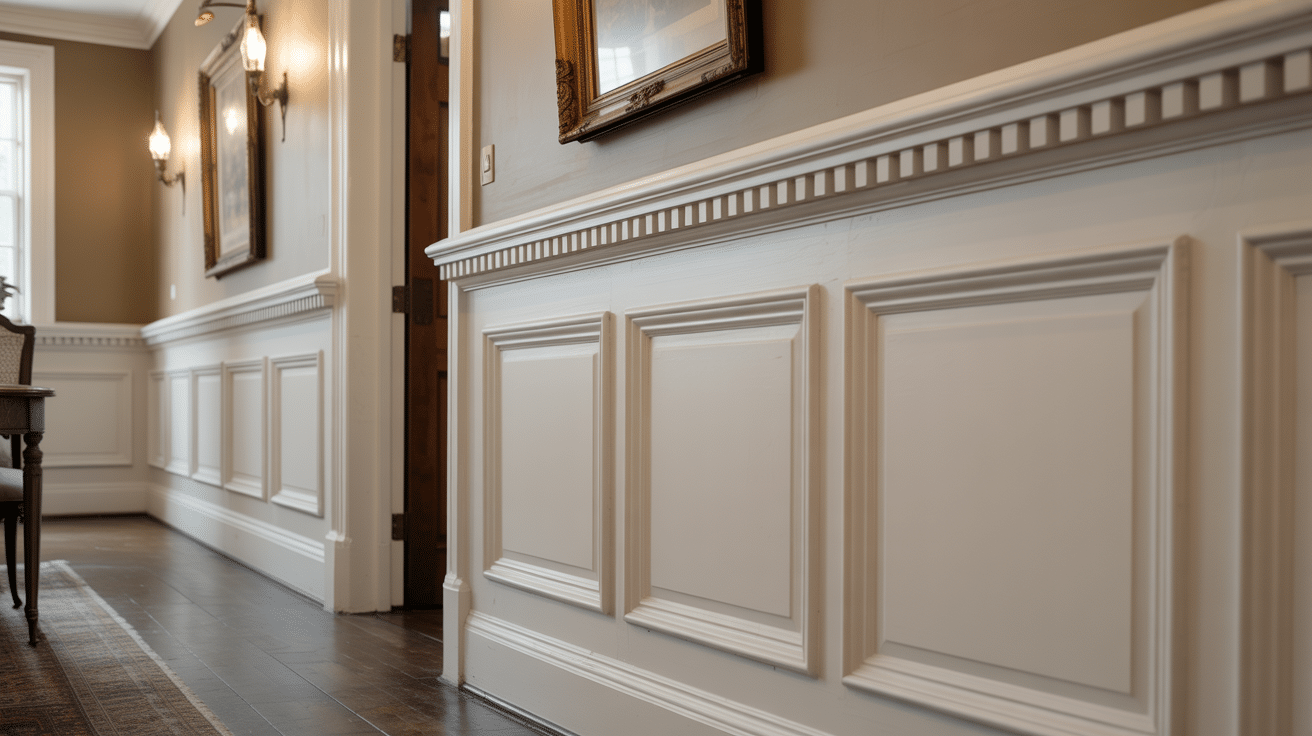
A timeless, symmetrical style rooted in tradition. Raised panel wainscoting, usually painted white or cream, is paired with crown molding and chair rails for a refined, stately look.
- Best For: Formal dining rooms, libraries, traditional hallways
- Pair with: Neutral color palettes, antique furnishings, oil paintings
2. Modern Minimalist
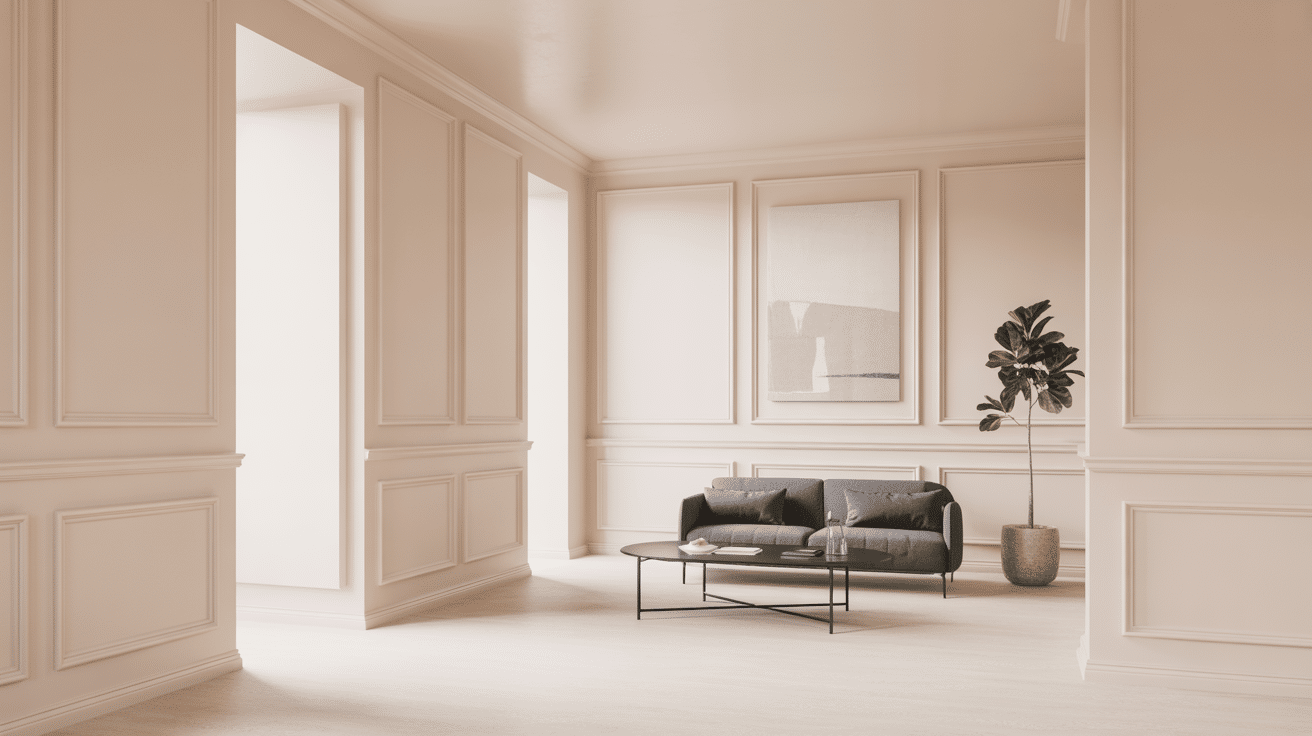
This style strips wainscoting down to its cleanest form, often flat panels or simple square framing in monochrome tones. It serves as a quiet backdrop to sleek furniture and open spaces.
- Best For: Living rooms, modern bedrooms, loft spaces
- Pair with: Matte finishes, neutral tones, large abstract art
3. Farmhouse Rustic
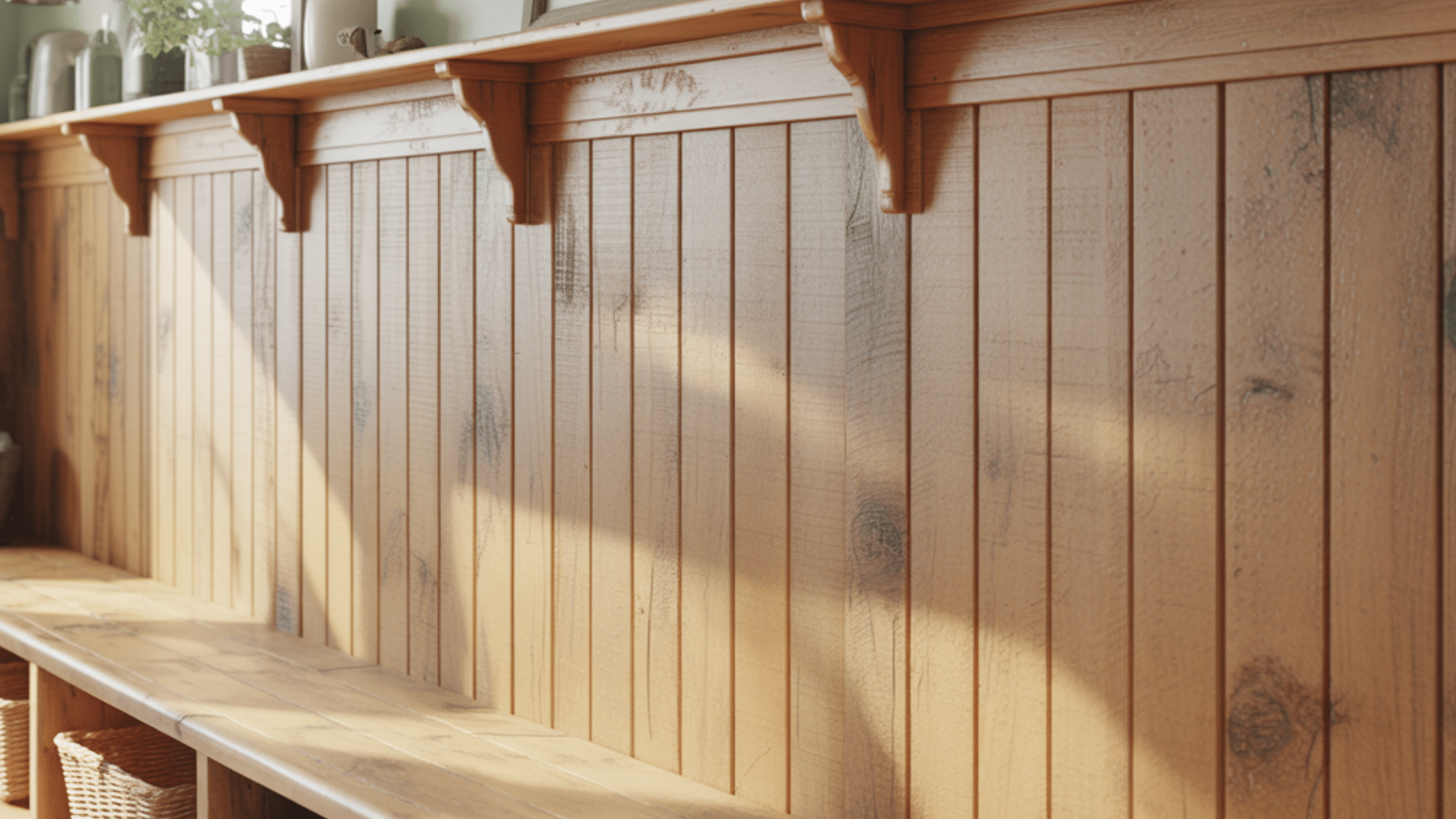
Using natural wood or distressed finishes, this style embraces imperfection and texture. Board and batten or beadboard panels are common, often in warm, earthy tones.
- Best For: Kitchens, entryways, cozy dens
- Pair with: Reclaimed wood, vintage décor, wrought iron accents
4. Scandinavian Simplicity
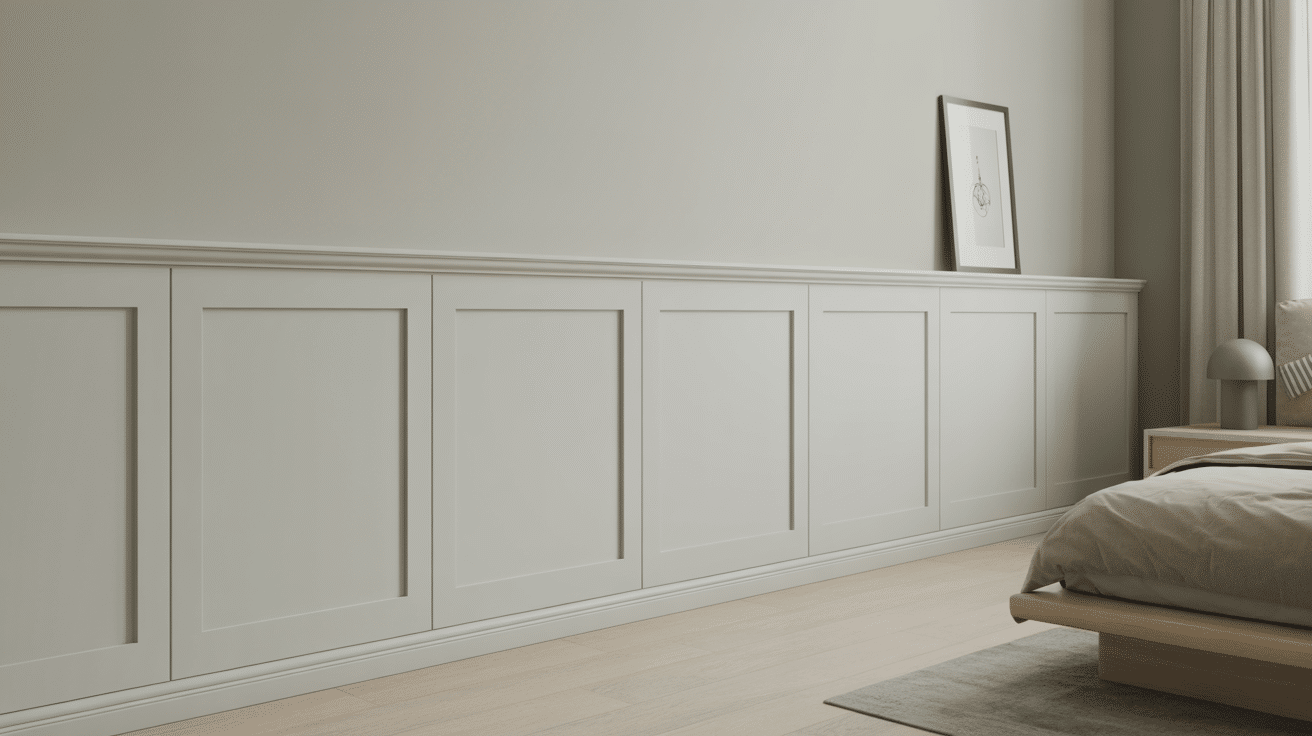
Focused on light, airiness, and natural elements, this style uses soft-toned flat panels or narrow beadboard paired with minimal décor.
- Best For: Bedrooms, reading nooks, small spaces
- Pair with: Light woods, white walls, linen fabrics
5. Transitional style
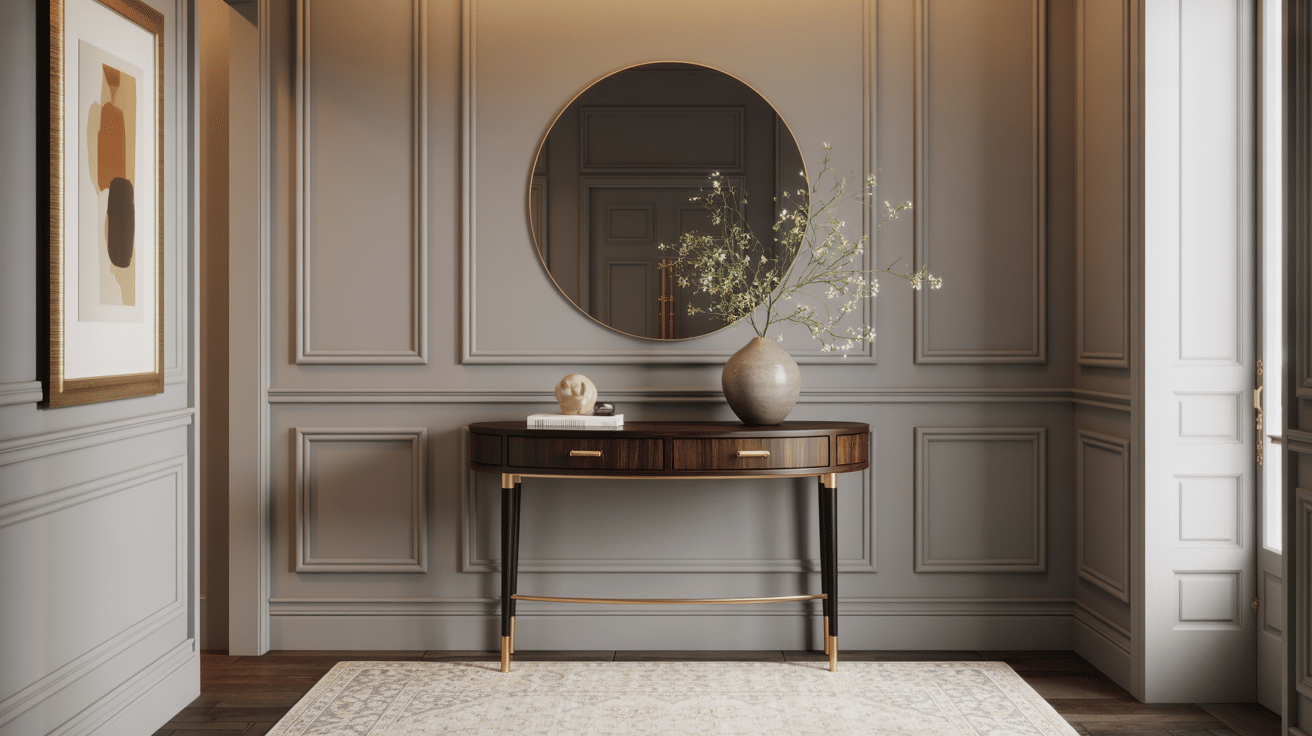
A blend of traditional and modern, this style features clean lines and soft curves. Overlay or picture frame wainscoting with muted paint colors offers quiet sophistication.
- Best For: Entryways, dining areas, powder rooms
- Pair with: Brass accents, subtle wallpapers, mid-century furniture
6. Coastal Breezy
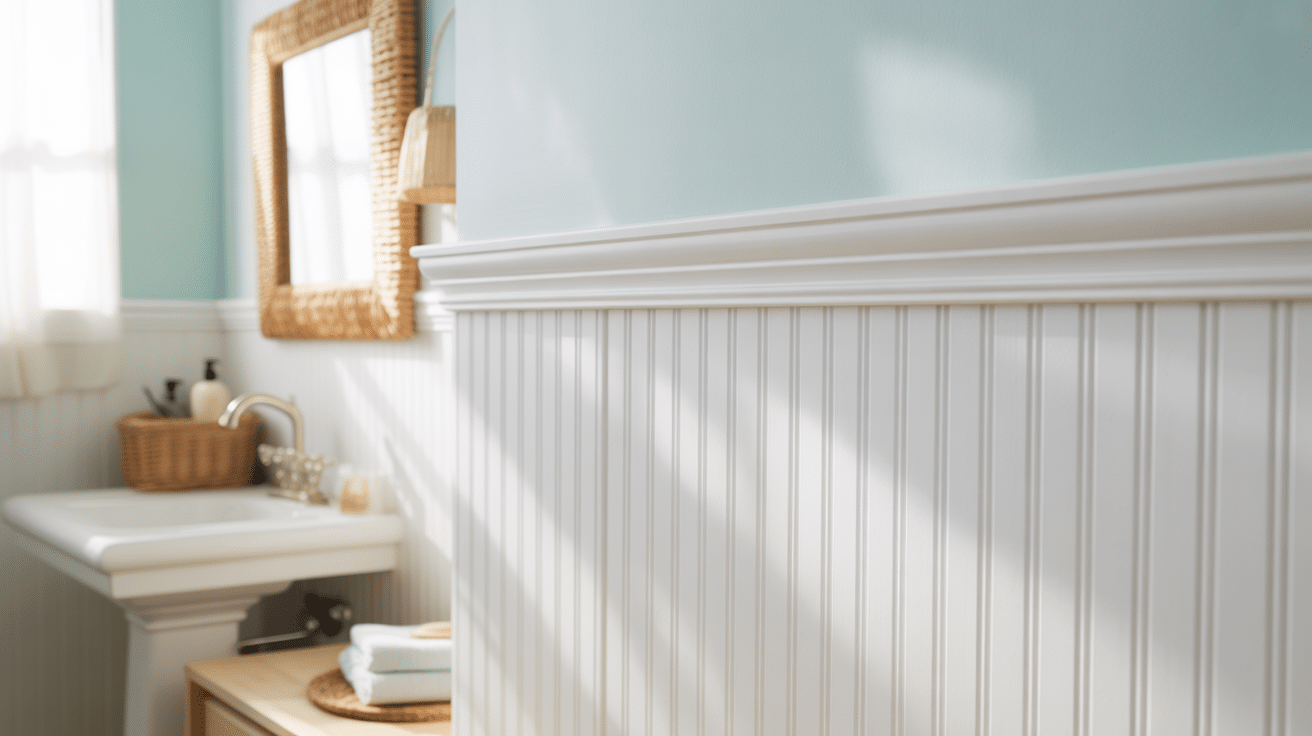
Inspired by seaside cottages, this style leans heavily on white beadboard or shiplap. It’s light, airy, and often paired with soft blues or sandy neutrals.
- Best For: Bathrooms, sunrooms, beach homes
- Pair with: Driftwood décor, seashell tones, open shelving
7. Parisian Chic
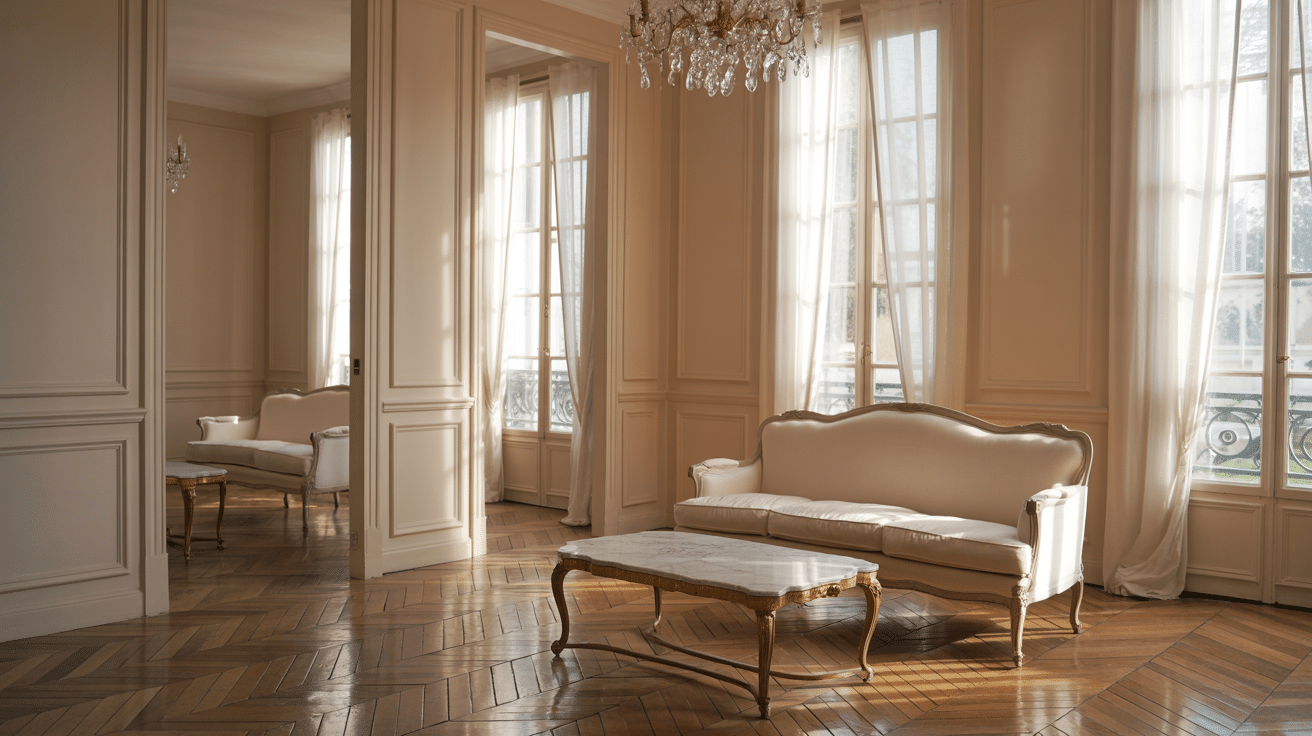
High-contrast picture frame or overlay wainscoting; usually painted the same color as the wall; adds luxury without loudness. Think style with a whisper.
- Best For: Living rooms, bedrooms, stylish apartments
- Pair with: Molding details, velvet accents, black and white artwork
8. Industrial Edge
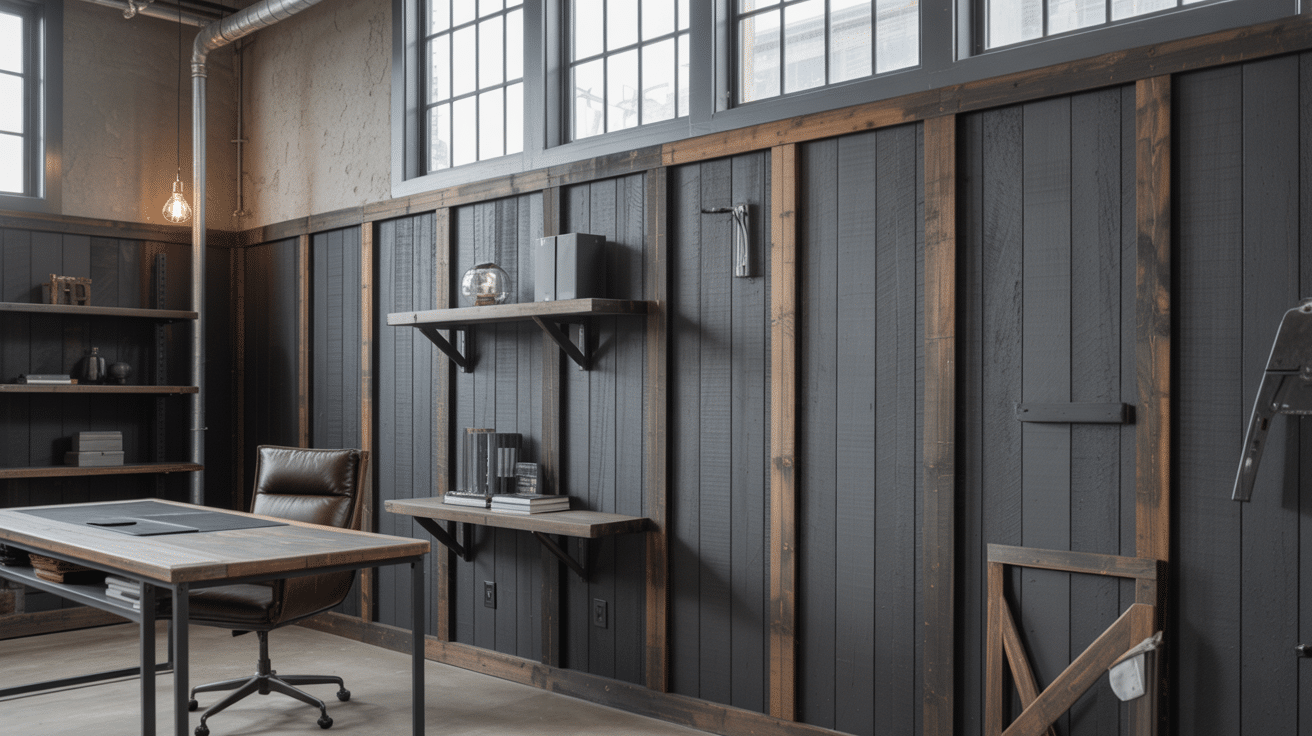
Raw, textural, and bold. Here, wainscoting might be made from materials like concrete panels, reclaimed wood, or even dark metal trims for an edgy urban vibe.
- Best For: Home offices, converted lofts, modern kitchens
- Pair with: Edison bulbs, exposed pipes, leather furniture
9. Art Deco Glam
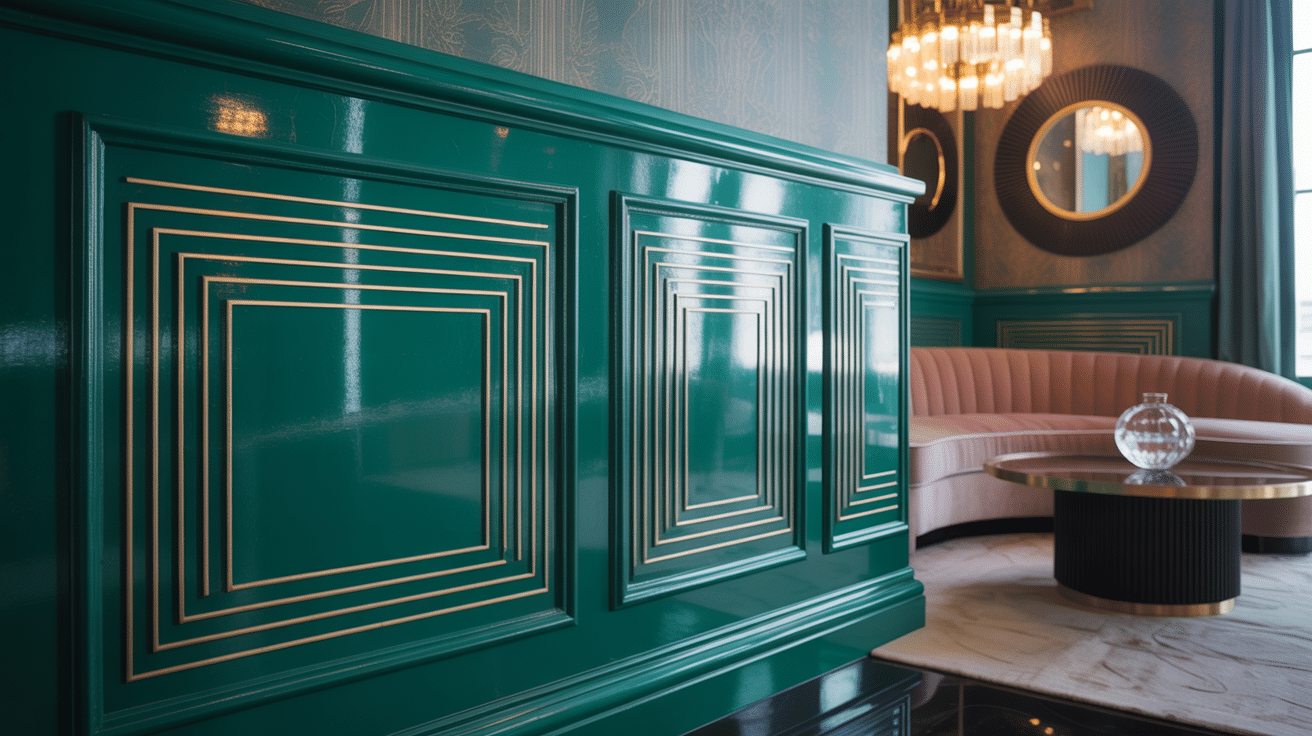
Geometric trims and bold shapes in glossy finishes or deep, jewel-toned paints make the wainscoting stand out as art itself.
- Best For: Statement walls, bar areas, entry foyers
- Pair with: Mirrors, gold hardware, patterned floors
Choosing Materials for Wainscoting
The right material sets the tone for your wainscoting project, if you’re aiming for budget-friendly charm or timeless classic. Below are the most popular materials used in wainscoting, along with their ideal applications, benefits, and limitations.
MDF (Medium-Density Fiberboard)
A cost-effective engineered wood made from compressed wood fibers and resin. It has a smooth surface, is easy to cut and paint, and affordable. It is not moisture-resistant and can swell if exposed to water. It is best for living rooms, dining areas, and hallways (dry areas).
Solid Wood (Pine, Oak, Maple, Poplar)
Natural wood offers richness, texture, and customization through staining or painting. It is durable, can be stained or painted, and adds value. It is more expensive, can warp in humid environments. It is best for bedrooms, offices, entryways, and formal spaces.
Plywood
Thin sheets of wood veneer are layered for strength and flexibility. It is lightweight, budget-friendly, and paintable. It lacks natural wood grain depth and is less durable than hardwood. It is best for DIY projects, kids’ rooms, and casual interiors.
PVC (Polyvinyl Chloride)
A synthetic plastic material known for its water resistance and low maintenance. It is waterproof, mold-resistant, and easy to clean. It has limited style options, is not stainable, and may look artificial. It is best for bathrooms, basements, laundry rooms, and mudrooms.
Reclaimed Wood or Shiplap
Eco-conscious and visually rich, these materials offer rustic charm. It is sustainable, high character, and great for feature walls. However, it may require extra preparation, and it also has inconsistent sizes and finishes. It is best for rustic, farmhouse, and industrial-themed interiors.
Wainscoting Installation Tips
I’ll be honest, wainscoting isn’t the most challenging DIY project out there, but it does require some patience and planning.
- Find and mark your studs first: Your wainscoting needs solid backing, especially along the top rail. Use a stud finder and mark locations with light pencil marks before making any cuts.
- Install the top rail first and level it perfectly: Don’t trust that your floors are level because they probably aren’t. Getting that top rail straight and true makes everything else fall into place much easier.
- Measure twice, cut once (seriously): With wainscoting, you’re making lots of cuts that need to fit together precisely. Rushing the measuring stage will cost you more time and materials later.
- Use a pneumatic nail gun if possible: Hand nailing works, but a brad nailer speeds things up dramatically and gives you cleaner results with less chance of splitting the wood.
- Pre-drill for screws near board ends: This prevents splitting, especially with MDF or pine. A quick pilot hole saves you from having to replace entire pieces.
- Plan your layout on paper first: Sketch out panel spacing so you avoid awkward narrow panels at corners. Equal spacing looks way more professional than random widths.
The Impact of Wainscoting on Home Design
Here’s what I love most about wainscoting: it’s one of those upgrades that works harder than you’d expect.
Beyond looking beautiful, it genuinely boosts your home’s resale value because real estate agents tell me that quality millwork signals craftsmanship to buyers.
There’s practical value too, since that extra layer provides insulation and protects your walls from daily wear and tear. I’ve seen it save countless dining room walls from chair damage.
But the visual impact is where wainscoting really shines. It creates natural horizontal breaks that make large or awkward walls feel more proportioned and intentional, like that long, boring hallway I helped change last year.
Conclusion
Now you’ve got the full picture of what different types of wainscoting can do for your home.
If you’re drawn to classic raised panels or modern board and batten, the key is choosing a style that fits your space and skill level. Don’t overthink it; even simple flat panels can make a dramatic difference when installed thoughtfully.
This isn’t just about following trends. It’s about creating rooms that feel intentional and finished.
Start with one room, take your time with the planning, and trust the process. Your walls are waiting for that extra layer of character.


